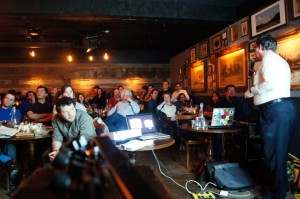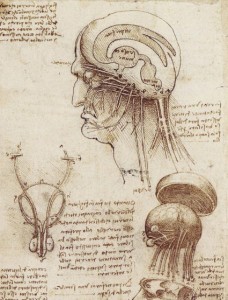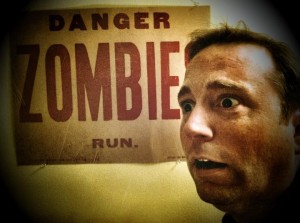Join us as we venture into dark and shadowy territory with mysterious deaths, talk of zombie and their favorite food — brains!
We’re lucky to have two NNA2 alumni back with us this month:
Historian James Mann walks us through the “Coroner’s Court,” a practice used long ago to investigating deaths which occurred under murky circumstances.
Anatomist Susan Starr fills us in on just what’s in your head — and why brain-eating zombies would probably be malnourished!
Adding to the Halloween-y set, RELATE-r and researcher Katherine Prater will take us through the tingling, sweating, and heart-racing topic of fear and the brain — even toughing on just how scientists examine it in the lab.
When: October 23rd, 2014, doors at 630pm, talks at 7pm!
Where: LIVE, 102 S First St, Ann Arbor
Moola: FREE! Thanks, Ann Arbor District Library!
 James Mann – Coroner’s Court
James Mann – Coroner’s Court
The Coroner’s Court is a now rarely used legal procedure used to investigate a death under mysteries circumstances. The County Coroner, or medical examiner, would impanel a jury, usually six men, who would view the remains, hear witnesses and study the evidence. This was not a trial, as no one was then accused of a crime. The jury was to determine, first, if the person was dead, and if dead, was the cause of death due to, natural causes, accident, suicide or murder. When the jury determined the cause of death was due to accident or murder, then, if possible, name the one most likely to have caused the death. Sometimes the jury returned a verdict of: “due to person or persons unknown to us at this time.”
About James Mann:
James Mann is a local historian and the author of eight published books on local history. His books include Wicked Washtenaw County, Wicked Ann Arbor and Wicked Ypsilanti. He hosts Lantern Tours of Highland Cemetery, in Ypsilanti, the last two weeks of October.
 Susan Starr – What is in your Brains: Why Zombies are Malnourished
Susan Starr – What is in your Brains: Why Zombies are Malnourished
Ever wondered what your brains are made up of, beyond the Beginning Biology textbook discussion? Ever wonder how Zombies could possibly get enough nutrition from one food source? Ever heard that ridiculous statement that we only use 10% of our brains? Hopefully you said yes to at least one of these, because that is what you will hear about in my talk. I will explore some real neuroscience, but mix in some Halloween fun.
About Susan Starr:
I am a born teacher. Maybe I just like to think I’m always right. Anyway … I have taught at the college level for almost 30 years. I have taught just about every Biology class you can think of (Medical Parasitology anyone? Economic Zoology? Neuroanatomy?), but spent the majority of my career teaching Human Anatomy and Physiology to future nurses, doctors, physical and occupational therapists, and now Physician’s Assistants in the new EMU program. I LOVE my new job … like the cherry on top of a great career. My favorite places in the world are the woods (especially if mountains and/or water are nearby), my home & garden, and my Anatomy (cadaver) Lab. I’ve been married over 35 years to the same (very patient) guy, and we have a wonderful, compassionate son and daughter-in-law on the East Coast and a beautiful, talented daughter on the West Coast.
 Katherine Prater – Fear + Brains ≠ Zombies
Katherine Prater – Fear + Brains ≠ Zombies
Have you ever been cornered by zombies and not had a shotgun on hand? Did your palms sweat and your breathing increase? If so, you’ve experienced fear! Fear is one of our most basic emotions, and it is necessary for living beings to avoid undeath. During this talk, we will discuss the brain regions that help individuals determine what and when to fear. There will also be a demonstration of how scientists study fear in the laboratory. If you are interested in feeling the back of your neck prickle on the week before Halloween, you’re probably not a zombie, so this talk is for you!
About Katherine Prater:
Katherine adores science (both with and without the fiction). When she is not sciencing with her labmates, Katherine can often be found playing computer games with her husband, playing board games, or reading a good book. She also may be found playing with her “love”bird, known to some as “the destroyer of worlds.” Recently, Katherine has had the great pleasure of being a co-founder of RELATE, an organization at the University of Michigan that endeavors to teach STEM graduate students to better explain their research to lay-audiences.
